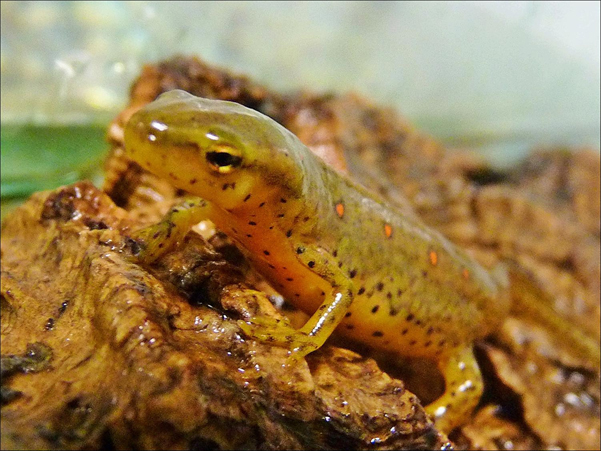The red spotted newt
The red spotted newt (Notophthalmus viridescens) is a valuable model system for studies of tissue
regeneration. The genomic sequences and annotations has been sparse, in part due to its large
and repetitive genome. At the time of initiating the transcriptome sequencing, only 82 unique cDNA
sequences for the red spottend newt were present in GenBank.
Transcriptome reconstruction strategy
To generate a comprehensive transcriptome for the red spotted newt, we constructed paired-end RNA-Seq libraries
using the dUTP method from diverse tissues and body parts. In total, we sequenced 2x100 bp from over 600 million
fragments. All raw sequencing data has been deposited in Sequence Read Archive at NCBI (
SRP018244).
The reads were assembled using
Trinity.
Summary of the comprehensive reference transcriptome and inferred protein sequences
The reconstructed transcriptome and inferred proteome was validated using a variety of methods
(see Abdullayev et al. in press). In summary, we found the transcripts lengths and complexity to be on par
with those of well annotated vertebrate organisms. Assigning function through mapping of inferred proteins
to UniProt and TrEBML, we identified over 19,000 unique proteins.
Reference:
The paper describing the transcriptome and inferred proteome:
A comprehensive reference transcriptome and inferred proteome for the salamander Notophthalmus viridescens
Abdullayev I., Kirkham M., Bjorklund A., Simon A., Sandberg R.
Experimental Cell Research, http://dx.doi.org/10.1016/j.yexcr.2013.02.013
[link to the paper]
Download reference sequences and annotations:
Updated reference transcriptome (Feb 2014)
| Data Type | FastA file |
|---|
| Reference transcriptome (gzip compressed): | Transcripts |
First reference transcriptome (used in Adbullayev et al. 2013)
| Data Type | FastA file |
|---|
| Reference transcriptome (gzip compressed): | Transcripts |
| Inferred proteome (gzip compressed): | Proteins |

